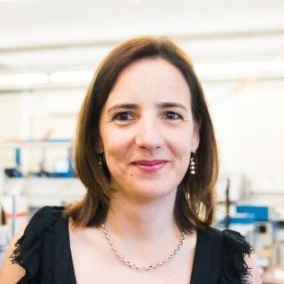Occurrence of Pharmaceuticals in Water and Their Removal Technologies
A special issue of Water (ISSN 2073-4441). This special issue belongs to the section "Wastewater Treatment and Reuse".
Deadline for manuscript submissions: closed (20 January 2024) | Viewed by 5287
Special Issue Editors
Interests: trace analysis of emerging pollutants; occupational exposure; risk assessment; advanced oxidation processes; membrane separation and adsorption
Interests: occurrence and distribution of multi-class organic micropollutants in water/wastewater; analytical tools for determination of organic micropollutants; identification of by-products; advanced oxidation processes: membrane technologies
Special Issues, Collections and Topics in MDPI journals
Special Issue Information
Dear Colleagues,
Pharmaceuticals enter the water cycle during their manufacture, use and disposal. Their constant discharge into the sewage system, the lack of effective treatment approaches in wastewater treatment plants, and their bioaccumulation and biomagnification potential may have critical consequences for environmental and human health. Significantly, pharmaceuticals have been detected in rivers at concentrations above those considered safe for aquatic organisms, or at levels associated with antimicrobial resistance, posing a global threat to human health, as well as environmental integrity, resilience and sustainability.
Knowledge on the occurrence of pharmaceuticals in the water cycle and on their fingerprints across the world is crucial to obtain a global perspective of the problem, and thus prioritize solutions. To tackle the problem, cutting-edge and effective treatment approaches need to be implemented prior to the discharge or reuse of waters contaminated with pharmaceuticals.
In light of the challenges mentioned above, this Special Issue will focus on original articles or review articles addressing the following topics (however, this list is by no means exhaustive):
- The occurrence of pharmaceuticals in aquatic matrices (wastewater, surface/ground water, and drinking water): antineoplastic drugs; immunosuppressants; antibiotics; antifungals; antivirals; nonsteroidal anti-inflammatory drugs; anticonvulsants; β-blockers, etc.
- Wastewater treatment: advanced oxidation technologies (AOTs such as UV-based technologies (e.g., UV/H2O2, UV/Cl); Fenton and photo-Fenton processes; TiO2 photocatalysis; ozone-based processes; etc.); membrane separation; biological treatments; adsorption; coupling technologies; and advances in materials, catalysts, and methods of AOTs for water treatment.
Dr. Mónica Santos
Dr. Ana Rita Lado Ribeiro
Guest Editors
Manuscript Submission Information
Manuscripts should be submitted online at www.mdpi.com by registering and logging in to this website. Once you are registered, click here to go to the submission form. Manuscripts can be submitted until the deadline. All submissions that pass pre-check are peer-reviewed. Accepted papers will be published continuously in the journal (as soon as accepted) and will be listed together on the special issue website. Research articles, review articles as well as short communications are invited. For planned papers, a title and short abstract (about 100 words) can be sent to the Editorial Office for announcement on this website.
Submitted manuscripts should not have been published previously, nor be under consideration for publication elsewhere (except conference proceedings papers). All manuscripts are thoroughly refereed through a single-blind peer-review process. A guide for authors and other relevant information for submission of manuscripts is available on the Instructions for Authors page. Water is an international peer-reviewed open access semimonthly journal published by MDPI.
Please visit the Instructions for Authors page before submitting a manuscript. The Article Processing Charge (APC) for publication in this open access journal is 2600 CHF (Swiss Francs). Submitted papers should be well formatted and use good English. Authors may use MDPI's English editing service prior to publication or during author revisions.
Keywords
- pharmaceutical pollution
- water treatment
- advanced oxidation technologies
- membrane processes
- adsorption
- biological treatments
- advanced materials






